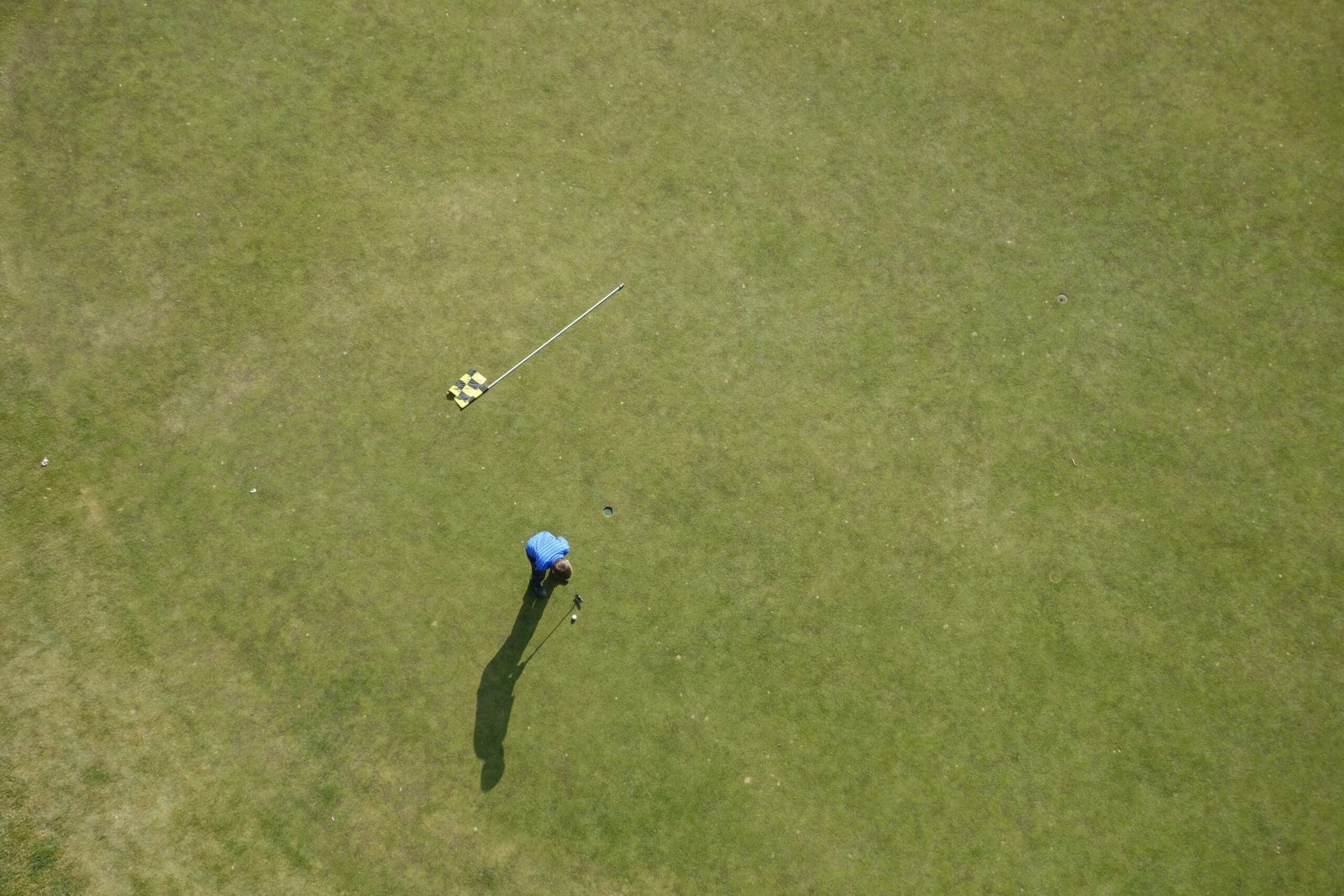Introduction to Quidditch
Quidditch is a fictional sport created by British author J.K. Rowling in her beloved Harry Potter series. First introduced in “Harry Potter and the Philosopher’s Stone,” the game has captured the imaginations of millions of readers and viewers around the world. Played on broomsticks, Quidditch involves a combination of strategy, teamwork, and skill, making it a thrilling spectacle both in the novels and in the growing movement to bring it into real life.
The game consists of four balls: the Quaffle, two Bludgers, and the Golden Snitch. Teams of seven players take to the skies with specific roles: three Chasers, two Beaters, one Keeper, and one Seeker. Chasers are responsible for scoring goals by throwing the Quaffle through one of the opposing team’s three hoops, earning ten points for each goal. The Beaters work to protect their team from the fast-moving Bludgers, which are enchanted to disrupt play. Meanwhile, the Seeker’s primary objective is to catch the elusive Golden Snitch, which awards an additional 150 points and can ultimately decide the outcome of the match.
Quidditch matches are also notable for their dynamic play, featuring soaring players, strategic passes, and the high stakes associated with catching the Snitch. The rules outlined by Rowling include various penalties and game strategies that reflect the competitive nature seen in real-world sports. Players on broomsticks experience both the exhilaration and challenges of flight while honing their skills in coordination and collaboration.
This fictional portrayal of Quidditch has inspired a generation of fans to transform the sport into a tangible reality, leading to the establishment of teams, leagues, and tournaments worldwide. As we explore further, we will delve into the fascinating journey of how Quidditch made this remarkable transition from a creative fantasy within the pages of a book to a legitimate sport enjoyed by many in today’s world.
The Birth of Real-World Quidditch
Quidditch, a sport that originated in the widely popular Harry Potter book series, transitioned from the realm of fiction into a tangible reality in the early 2000s. The initial spark for creating a real-world version of this whimsical game emerged in 2005 at Middlebury College in Vermont, where a group of enthusiastic fans devised a way to play the game outside of the pages of J.K. Rowling’s novels. This initial gathering paved the way for the formation of teams and leagues across the United States and eventually around the globe.
As interest in playing Quidditch grew, various groups began to establish their own rules inspired by the magical game while also making necessary adaptations for practical play. The first regulations were crafted to mirror the dynamics of Quidditch as depicted in the books, including elements such as the roles of chasers, keepers, beaters, and seekers. However, adjustments were made to ensure feasibility on the ground, such as replacing flying broomsticks with the physical requirement of running while holding a broomstick between the legs. These unique adaptations created an exciting and engaging sport that embraced the essence of the original, while grounding it in reality.
The formation of the International Quidditch Association (IQA) in 2007 marked a significant milestone in the formalization of the sport. The IQA aimed to oversee the development of Quidditch worldwide, establishing rules and organizing competitions that would support the global community of players. This development further cemented Quidditch’s status as an official sport and contributed to its increasing popularity. By organizing regional leagues and international tournaments, the IQA has encouraged the growth of Quidditch, allowing countless players to experience the joy of this once-fictional sport, now firmly anchored in reality.
Community and Inclusivity in Quidditch
Quidditch, originally a fictional sport portrayed in J.K. Rowling’s Harry Potter series, has successfully transitioned into a real-world activity, bringing about a vibrant and inclusive community that stands out for its welcoming nature. One of the defining characteristics of the sport is its commitment to inclusivity, inviting individuals of all genders, skill levels, and backgrounds to participate. This openness has been instrumental in driving the sport’s rapid growth, contributing to a diverse population of players worldwide.
The sport’s unique rules, especially the implementation of mixed-gender teams, reinforce the importance of equality and respect among players. Quidditch leagues encourage a culture where individuals can collaborate and interact, fostering a sense of camaraderie that extends beyond the pitch. Participants readily share their experiences, skills, and even tips on improving game strategies, thereby enriching the learning environment for newcomers. This collaborative spirit not only enhances the gameplay but also strengthens the bond within the community.
Furthermore, quidditch is adaptable, offering various levels of competition that cater to all players, regardless of their prior sporting experience. Casual play opportunities are abundant, where individuals can participate without the pressure of competitive success, focusing instead on the enjoyment and social aspects of the game. Such an environment encourages newcomers to engage, resulting in an ever-growing participant base and a more diverse range of backgrounds represented in the sport.
The inclusivity of quidditch has also led to the establishment of various initiatives aimed at supporting underrepresented groups, thus enhancing community ties. By promoting accessibility and providing a platform for all voices, quidditch embodies the values of unity and respect that are vital in today’s society. As the sport continues to evolve, its dedication to fostering inclusivity not only enhances the experience for players but also solidifies its status as a beloved global phenomenon.
Global Reach and Popularity
Quidditch has transcended its origins in J.K. Rowling’s “Harry Potter” series, evolving into a real-life sport that boasts a diverse and expanding global community. The sport’s journey from fiction to reality is marked by its establishment in numerous countries, with organized leagues and teams across continents. This international appeal is largely attributed to the unique blend of athleticism and inclusivity that quidditch offers, fostering a sense of camaraderie among players and enthusiasts alike.
One of the primary factors contributing to quidditch’s global popularity is the support from university students. Many collegiate institutions have embraced the sport, incorporating it into their extracurricular activities. University teams not only provide a platform for students to engage in physical activity but also promote teamwork and strategy, enhancing the overall experience. Quidditch tournaments held at universities attract participants from diverse backgrounds, further solidifying its status as a sport that unites rather than divides.
Moreover, media exposure has played a crucial role in expanding quidditch’s reach. Documentaries, online streams of matches, and social media presence have allowed the sport to capture the attention of a wider audience. Consequently, this exposure has encouraged local communities to establish their teams, promote inclusivity, and participate in multi-sport events. The global quidditch community often collaborates in organizing tournaments, fostering cultural exchanges and international relations.
Ultimately, as more diverse nations embrace quidditch, and as its visibility continues to grow through various media outlets, the sport’s foundation lays the groundwork for even broader participation. This rich tapestry of cultural engagement not only reflects quidditch’s adaptability but solidifies its status as an international phenomenon that bridges gaps and nurtures friendships across the world.
Major Tournaments and Competitions
The growth of quidditch as a real-life sport has been significantly evident through its establishment of several major tournaments and competitions worldwide. Among these, the Quidditch World Cup stands out as the premier event that showcases top teams from various countries, fostering international competition and camaraderie among players. Held biennially, this tournament draws in teams representing nations such as the United States, Australia, Canada, and the United Kingdom, each striving to claim the title while promoting their local leagues and communities.
The Quidditch World Cup is organized in a manner akin to traditional sporting events, with a series of qualifying rounds leading to the finals. These rounds create an exciting atmosphere as teams vie for a position at the prestigious tournament. Additionally, players’ performances during these competitions can influence selections for national teams, further raising the stakes and encouraging the development of talent across regions.
In addition to the World Cup, regional championships play a crucial role in the overall structure of quidditch competitions. These tournaments, often held at local, national, and continental levels, serve as crucial platforms for teams to showcase their skills and foster growth within the sport. Events such as the European Quidditch Cup and various national leagues offer opportunities for players to engage in competitive environments, leading to higher levels of play overall.
These tournaments not only amplify the excitement for players but also provide fans with thrilling experiences. Spectators now have access to live matches, whether via streaming platforms or on-site attendance, thus broadening the fan base of quidditch. The media coverage surrounding these events serves to further enhance the profile of quidditch, making it more appealing to potential players and sponsors, and solidifying its place within the global sporting landscape.
Themes of Sportsmanship and Ethics
The emergence of quidditch from a fictional sport into a real-world activity has resulted in a growing focus on the themes of sportsmanship and ethics among its players and communities. A core element of quidditch’s appeal is its emphasis on fair play, which reflects the values of respectful competition and integrity inherent in organized sports. This commitment to ethical conduct is crucial, as it helps to foster a sense of community among players who seek not only to compete but also to engage in a positive, inclusive environment.
Inclusive participation is one of the primary ethical principles that underpin quidditch. Most leagues encourage players from diverse backgrounds and skill levels, ensuring an equitable experience for all participants. This commitment to inclusion promotes a greater sense of belonging and enables individuals to appreciate the spirit of teamwork. Players are often reminded that success in quidditch is not solely measured by victory, but also by the spirit of collaboration and support shown among teammates and opponents alike.
Moreover, the quidditch community has implemented specific guidelines and measures aimed at sustaining sportsmanship. For instance, players are expected to adhere to a code of conduct that highlights the importance of respect for referees and fellow competitors. The positive reinforcement of ethical conduct, alongside structured training programs focused on teamwork and communication, is integral to nurturing young athletes’ growth and development.
Additionally, educational workshops on conflict resolution and respect are frequently organized by many quidditch leagues. These initiatives strive to promote awareness about the ethical implications of competing and the importance of upholding the sport’s values. By reinforcing these themes, the quidditch community seeks to exemplify how integrity and camaraderie can elevate the overall experience for everyone involved.
Challenges Facing Quidditch Today
As quidditch continues to gain traction outside its fictional origins, it encounters several challenges pivotal to its growth. One of the primary issues is funding. The sport, which is still in its formative stages, often relies heavily on grassroots fundraising and small sponsorships. This financial uncertainty hampers the ability to organize larger tournaments and develop youth engagement initiatives, which are essential for the sport’s sustainability. Securing reliable funding remains a significant hurdle for quidditch organizations, as they strive to compete with more established sports that command larger sponsorship deals and media attention.
Visibility is another considerable challenge. While interest in quidditch is rising, it still struggles to capture mainstream media coverage. This lack of exposure hampers recruitment efforts and limits opportunities for new players to discover the sport. Moreover, the absence of televised matches or high-profile events means that many potential participants may remain unaware of quidditch’s existence or the vibrant community surrounding it. Consequently, boosting visibility through social media campaigns and community outreach remains crucial for attracting new players and supporters.
Organizational governance poses yet another obstacle, as the quidditch community is still defining its structure and leadership frameworks. Different leagues and teams often operate independently, resulting in inconsistencies in rules, training practices, and competition formats. Establishing a coherent governance model that allows for collaboration while respecting the diversity of existing teams is essential for cohesive growth. Various initiatives are currently underway, such as the formation of national governing bodies and international federations, to streamline procedures and enhance the legitimacy of quidditch as a competitive sport.
The Future of Quidditch
The sport of quidditch, which originated from the beloved Harry Potter series, has transformed remarkably from a fictional pastime to a tangible, competitive sport played globally. As its popularity continues to swell, it raises important questions about what the future holds. One promising trajectory is the potential for increased accessibility and inclusivity. Organizations dedicated to quidditch are actively engaging diverse communities, aiming to recruit new players from various backgrounds, which ensures that the sport evolves into a more representative and inclusive arena.
Moreover, there is a strong emphasis on the utilization of technology to enhance the player and spectator experience. Innovations such as advanced tracking systems, augmented reality (AR) applications, and improved sports analytics have already begun to permeate the quidditch community. These technologies can facilitate better gameplay analysis, fostering player development and team strategies. Furthermore, introducing platforms for virtual engagement during events can significantly enhance fan interaction, drawing in larger audiences both in person and online.
As quidditch continues to emerge within the broader sporting landscape, strategic marketing will play a crucial role in its growth. The quidditch community’s efforts to promote the sport through social media campaigns, partnerships with educational institutions, and participation in various festivals and sporting events are vital for its sustained visibility. Collaborations with established sporting associations may also amplify its presence and credibility, further integrating quidditch into the mainstream sports culture.
In summary, the future of quidditch looks promising, fueled by the community’s commitment to inclusivity, the integration of modern technologies, and effective promotional strategies. As these elements continue to materialize, quidditch is poised for significant growth, potentially establishing itself as a prominent and enduring sport worldwide.
Conclusion: From Fiction to a Reality Worth Playing
Quidditch, originally an enchanting pastime found within the pages of J.K. Rowling’s beloved Harry Potter series, has successfully transitioned into a real-world competitive sport that captivates players and spectators alike. This evolution from fiction to reality signifies not only the power of imagination but also the dedication of a community that passionately embraces the spirit of this hybrid game. As we have explored throughout this discussion, Quidditch has fostered a unique blend of athleticism, strategy, and camaraderie, appealing to a diverse range of individuals across various demographics.
The sport’s increasing popularity underscores the importance of inclusivity and teamwork. Quidditch is known for breaking down traditional barriers within sports, allowing individuals of all backgrounds to engage in a highly interactive experience. Players of all genders can compete side by side, which is a progressive feature that promotes equality and respect within the athletic environment. This aspect not only enriches player interactions but also strengthens community ties among participants and fans. Consequently, Quidditch has become a platform for connection and personal growth beyond the realm of mere competition.
As Quidditch continues to gain traction, it is crucial to support its development at all levels. Investing in training programs, local leagues, and international tournaments can help ensure the sport thrives and evolves, adapting to the needs and aspirations of its community. By championing Quidditch, we encourage a new generation of athletes to discover the joy and collaboration inherent in playing the game. The journey from fictional sport to a vibrant reality has been remarkable, and every individual who participates contributes to its ongoing legacy. Such support is paramount in establishing Quidditch as a legitimate sport that inspires, challenges, and unites people worldwide.







